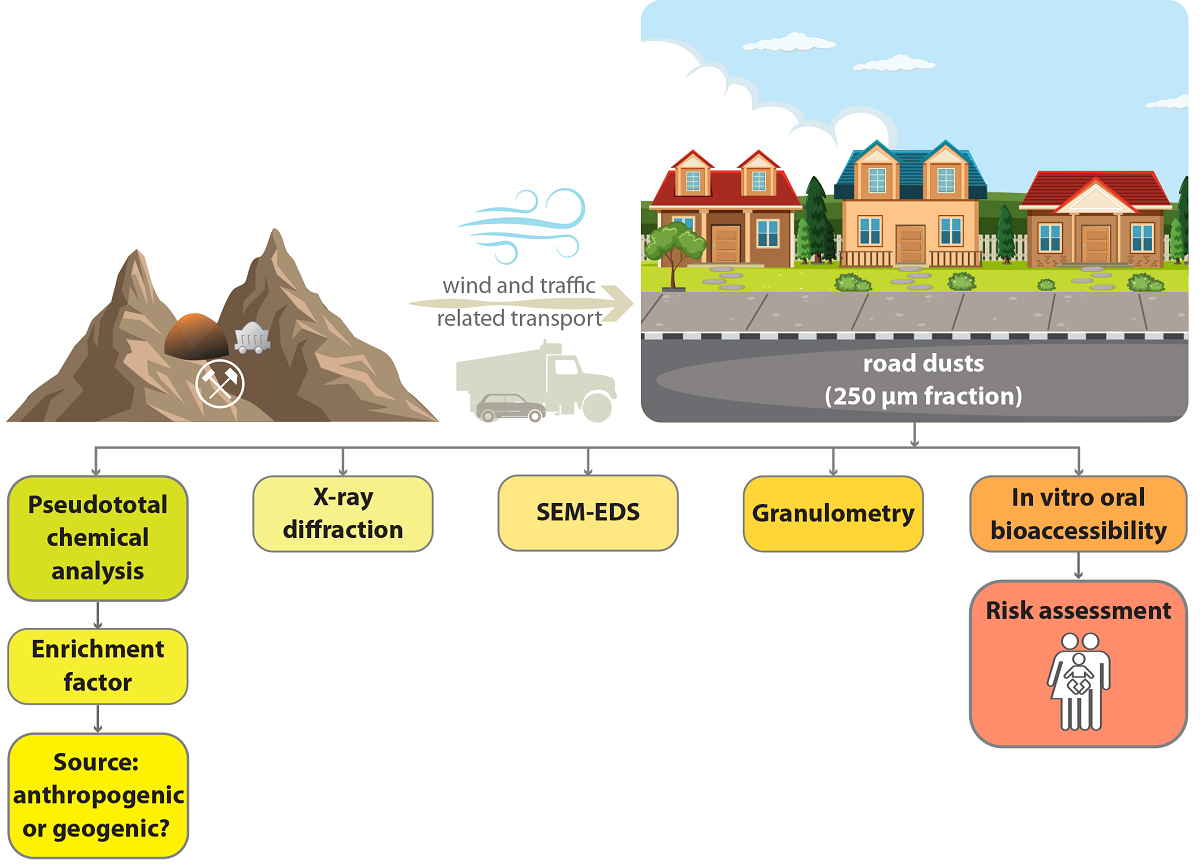Aiming the characterization of road dusts on the surrounding villages of an active mine and to assess metal(loids) bioaccessible fractions, a dust samples survey was undertaken. To achieve these objectives, pseudototal element concentration, mineralogical composition, Enrichment factor and in vitro extraction UBM assay for both gastric (G) and gastrointestinal (GI) phases, were determined. Results obtained revealed that arsenic represents the higher risk to humans, with mean pseudototal values higher than the maximum reference value range. Enrichment factor points to As significant to very high enrichment in all villages. Particles enriched in As, Ca, Fe, Cu, Al, Ti were identified by SEM-EDS in weathered agglomerates, linked to mine wastes and long-distance transport, both by wind and/or traffic. Arsenic bioaccessibility fraction (%BAF) presents low values in the studied samples, possibly due to low Fe complexes solubility with adsorbed As, limiting arsenic release and reducing its bioaccessibility. Concentrations of Cd bioaccessible G and GI phases are within the reference values range, while for Cu are above and for Pb are lower, than reference value range. Results show that the pseudototal fraction risk is overestimated when comparing to BAF (bioaccessible fraction), nevertheless, total G and GI risk are above the carcinogenic target risk (1.00E-06) in most samples. Carcinogenic risk of the bioaccessible contaminants shows that As is the element that represents higher risk for developing cancer over a lifetime, being ingestion the main risk route.

